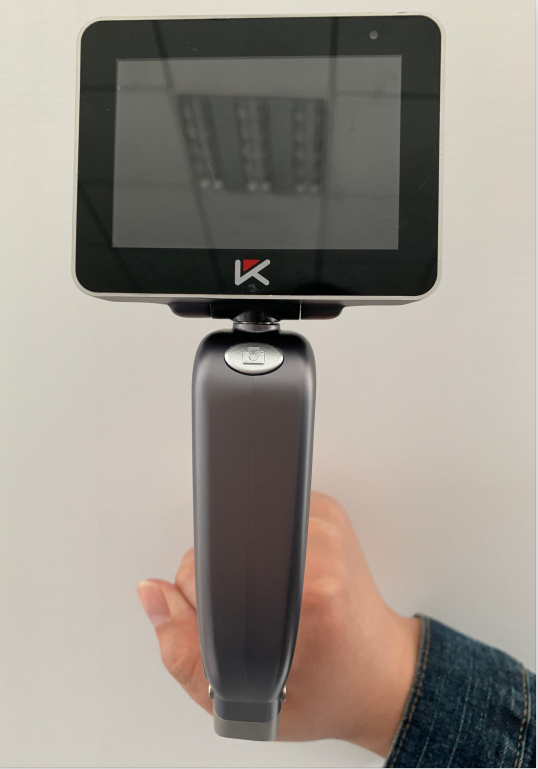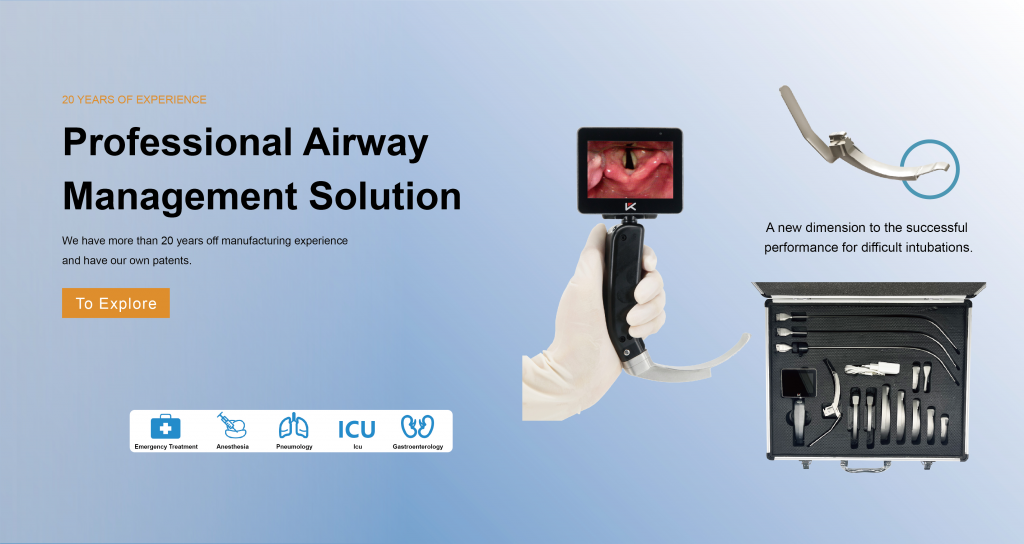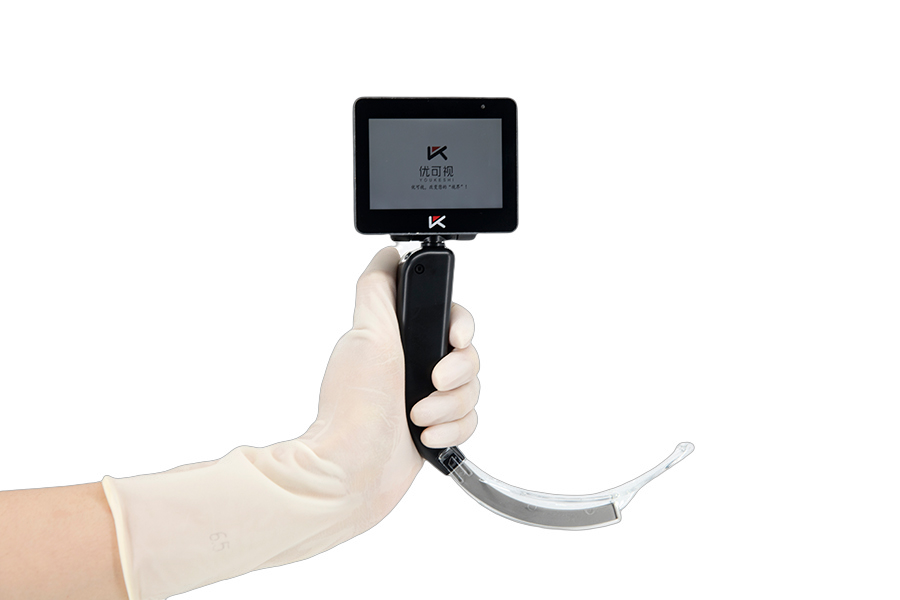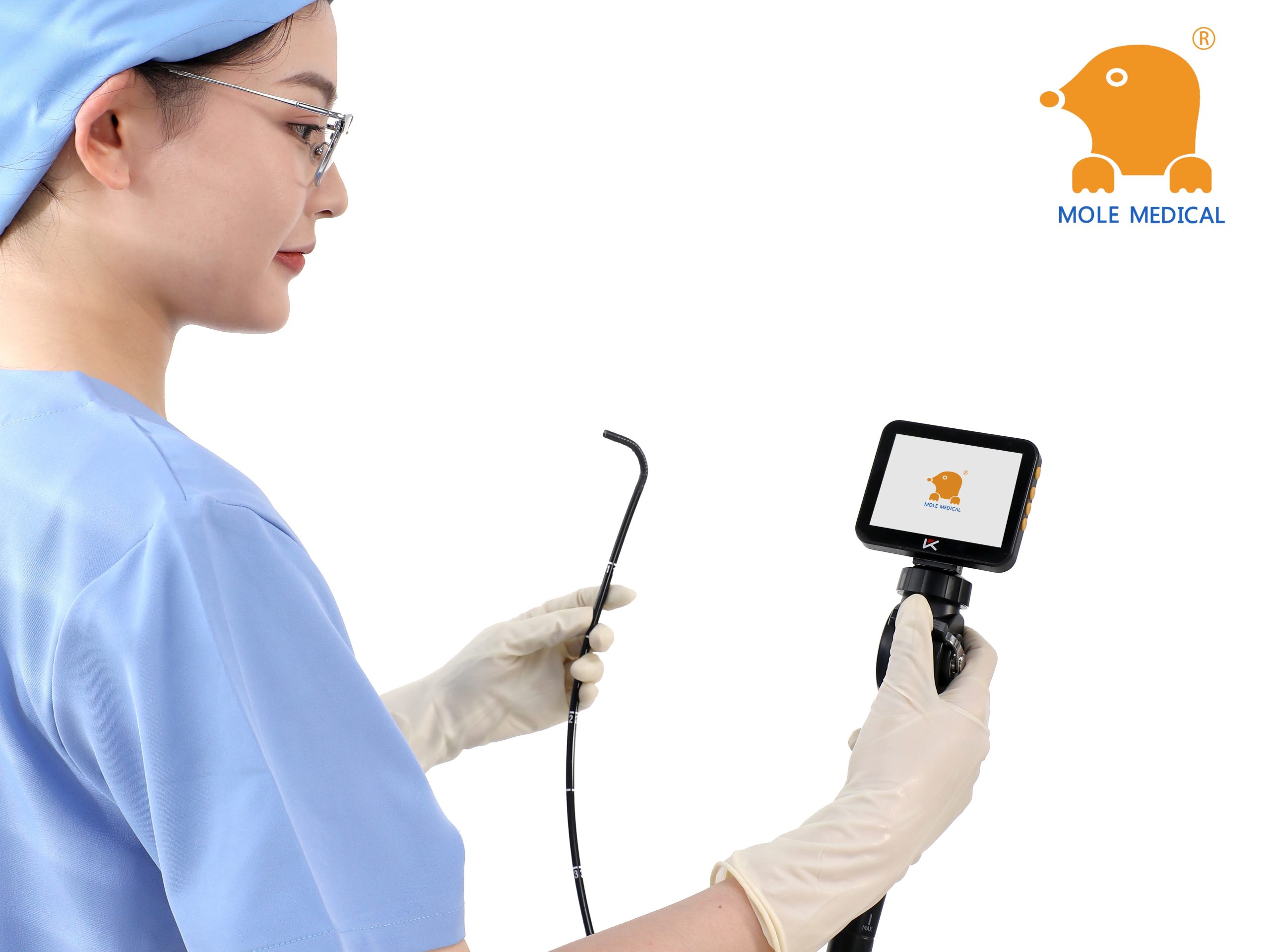Blades of Laryngoscope: Types & Uses Guide
Dec 23, 2023
Blades of Laryngoscope are critical instruments used in airway management procedures in medical settings. These blades are available in different types, sizes, and materials, and selecting the suitable one for a specific procedure is crucial to ensure safe and effective outcomes.
This comprehensive guide delves into the different aspects of laryngoscope blades, including their types, materials, cleaning and maintenance, replacement, and advancements in technology. It also discusses reliable manufacturers and suppliers of these blades, highlighting their impact on the medical industry.
Key Takeaways:
- Laryngoscope blades are indispensable instruments used in airway management procedures in medical settings.
- It is crucial to select the appropriate blade type, size, and material for a specific procedure to ensure safe and effective outcomes.
- Cleaning and maintenance of laryngoscope blades are essential in ensuring their longevity and reliability.
- Timely replacement of laryngoscope blades is crucial to maintain their effectiveness and safety during airway management procedures.
- Advanced technology in laryngoscope blade design, ergonomics, and visualization capabilities contribute to improved airway management outcomes.
Understanding Laryngoscopy
Laryngoscopy is a medical procedure that involves visualizing and accessing the airway of a patient for a variety of diagnostic and therapeutic purposes. Laryngoscope blades play a crucial role in this procedure as they are used to hold the patient’s mouth open and lift the tongue, allowing for an unobstructed view of the vocal cords and surrounding structures.
There are various types of laryngoscope blades available, including curved, straight, and disposable options that come in different sizes to accommodate different anatomical variations and medical procedures. Straight blades are designed to lift directly upwards on the epiglottis, while curved blades are created to fit around the base of the tongue to provide access to the glottis.
The size of the blade is another important consideration as it affects the overall effectiveness and safety of the procedure. Choosing the correct size of the laryngoscope blade involves evaluating the patient’s age, height, weight, and neck anatomy, as well as considering the skill level and experience of the healthcare professional performing the procedure.
Materials Used in Laryngoscope Blades
Laryngoscope blades are critical components of airway management in medical settings. These blades are available in different materials, including stainless steel, titanium, and other reusable and disposable options. The choice of material for laryngoscope blades is dependent upon the specific medical application.
Stainless steel blades are a common option as they are durable, economical, and easy to clean. They are widely used in emergency rooms, critical care units, and intensive care units. Titanium blades, on the other hand, are lighter than steel blades and offer better corrosion resistance. As a result, they are often preferred for long-term use in medical procedures.
Reusability and disposability of blades are essential considerations when choosing materials. Reusable blades are environmentally friendly and cost-effective in the long run. Disposables, meanwhile, ensure sterile conditions and do not require cleaning or maintenance. The decision to choose between reusable or disposable options is dependent on factors such as the nature of the medical procedure, budget, and preference of the healthcare professional.
Ultimately, selecting the appropriate material for laryngoscope blades is crucial to ensure effective airway management procedures. Factors to consider include durability, ease of maintenance, disposability, and sterility. By taking these considerations into account, healthcare professionals can make informed decisions on the best materials to use for specific medical applications.
Cleaning and Maintenance of Laryngoscope Blades
Proper cleaning and maintenance of laryngoscope blades are essential to ensure their longevity, reliability, and safety in airway management procedures. It is recommendable to clean the blades after each use to remove any debris and prevent cross-contamination.
The first step is to inspect the laryngoscope blades for visible signs of damage or wear and tear before cleaning them. Next, use a soft brush to remove any debris or organic material adhering to the surface of the blades.
For cleaning, use a mild detergent or enzymatic cleaner that does not contain oxidizing agents, such as bleach, hydrogen peroxide, or alcohol, as these substances can cause damage to the blades.
The disinfection method should follow the manufacturer’s guidelines and take into account the type of laryngoscope blades and the disinfection agent’s compatibility. It is crucial to ensure that the blades are thoroughly rinsed and dry before storage to prevent corrosion or damage.
Regular maintenance of laryngoscope blades should include inspecting the blades for wear and tear, checking the proper functioning of the blade mechanism, and verifying the batteries in battery-powered laryngoscopes. Cleaning and maintenance records should be kept in compliance with the facility’s infection control protocols and regulations.
By following these guidelines, healthcare professionals can optimize the performance of laryngoscope blades, reduce operating costs, and enhance patient safety.
Choosing the Right Blade Type for Airway Management

When it comes to selecting the appropriate laryngoscope blade type and size for airway management, healthcare professionals need to consider several factors. One of the primary considerations is the patient’s anatomy, such as neck size and flexibility, tongue position, and other factors that can impact laryngeal visualization.
Other considerations include the skill level of the healthcare professional and their preference for blade type and size. For example, some practitioners may prefer a particular blade design or size for specific procedures.
It’s worth noting that there are several laryngoscope blade types available in the market, including curved, straight, and hyper-angulated blades. Each blade type has its specific advantages and limitations, and the choice of blade type depends on the clinical scenario, patient characteristics, and clinician’s experience and preference.
Similarly, laryngoscope blade sizes also vary, ranging from pediatric sizes to adult sizes. Selecting the appropriate size is crucial to ensure safe and effective airway management while avoiding potential complications, such as trauma and failed intubations.
To make an informed decision on blade type and size, healthcare professionals should stay up-to-date with the latest guidelines, manufacturer recommendations, and clinical evidence. Consulting colleagues, attending professional development programs, and seeking feedback from patients can also help in making the right choice.
Replacement of Laryngoscope Blades
Timely replacement of laryngoscope blades is crucial to maintain the efficacy and safety of airway management procedures. Blades can wear down over time and develop nicks or sharp edges that can cause harm to the patient.
It is recommended to replace laryngoscope blades after a certain number of uses or when signs of wear and tear appear, such as discoloration or deformation. Healthcare professionals must ensure that they have access to replacement blades in the correct sizes and types for their specific needs.
Regular inspection and maintenance of laryngoscope blades can help identify the need for replacement. It is important to follow manufacturer guidelines for cleaning and storage to prolong the life of the blades. Establishing a regular replacement schedule can help ensure that healthcare professionals are using blades that are in optimal condition for airway management procedures.
In the next section, we will highlight leading manufacturers of laryngoscope blades, providing insights into the quality and innovation they bring to the field.
Reliable Laryngoscope Blade Suppliers
Laryngoscope blades are vital medical instruments used for airway management procedures in various healthcare settings. To ensure the best possible patient care, it is crucial for healthcare professionals to have access to high-quality and authentic laryngoscope blades. This is where reliable suppliers come in.
Trustworthy laryngoscope blade suppliers play a crucial role in providing consistent availability of blades to healthcare facilities. They offer a wide range of options, including different blade types, sizes, and materials. In addition, reputable suppliers ensure that the laryngoscope blades they offer meet regulatory standards and undergo rigorous quality control measures.
When selecting a laryngoscope blade supplier, healthcare professionals should consider their reputation in the market, customer reviews, and product availability. It is advisable to establish a trusting relationship with a reliable supplier to ensure consistent access to high-quality laryngoscope blades.
By partnering with reputable laryngoscope blade suppliers, healthcare professionals can have peace of mind and focus on providing optimal patient care. Choose a supplier that you can trust for consistent, high-quality, and authentic laryngoscope blades.
Advancements in Laryngoscope Blade Technology
Laryngoscope blades have come a long way with recent advancements in technology. These advancements include innovations in design, ergonomics, and visualization capabilities, which significantly contribute to improved airway management outcomes.
The new designs feature more curved, slimmer, and smoother surfaces, making them more comfortable for patients while minimizing tissue damage. Additionally, newer ergonomic designs allow for better grip and enhanced control during intubation.
Another significant advancement is in visualization capabilities, where modern laryngoscope blades come with a range of lighting options, including fiberoptic technology. This technology provides improved visualization of the airway and reduces the need for over-the-tube visualization.
Furthermore, some manufacturers have embraced instrumentation for a more guided approach to intubation, allowing the clinician to view the view and tube passage directly through the blade, promoting more accurate placement of the tube.
Overall, these advancements in laryngoscope blade technology demonstrate a promising shift in the medical field toward improved patient outcomes and safety during airway management procedures.
Best Practices for Using Laryngoscope Blades
When using laryngoscope blades for airway management procedures, healthcare professionals must follow essential best practices and guidelines to ensure optimal safety and effectiveness.
Firstly, selecting the appropriate blade type and size based on patient anatomy and individual preferences is crucial. In addition, healthcare professionals must ensure proper blade maintenance to promote longevity and reliability of the blades.
Proper technique and positioning are also important when using laryngoscope blades. Healthcare professionals should secure the patient’s airway adequately and avoid exerting excessive force, which can cause trauma.
Some common challenges faced when using laryngoscope blades include difficulty visualizing the airway, achieving optimal positioning, and identifying the need for blade replacement. It is crucial to seek additional support from colleagues or specialists when facing these challenges.
By following these best practices and guidelines, healthcare professionals can use laryngoscope blades effectively and safely during airway management procedures, ensuring optimal outcomes for patients.
Conclusion
In conclusion, it is crucial for healthcare professionals to have a comprehensive understanding of blades of laryngoscope to ensure optimal airway management outcomes. By selecting the appropriate blade type, size, and material, healthcare professionals can ensure safe and effective procedures for their patients. Proper cleaning and maintenance are also essential for ensuring the longevity and reliability of laryngoscope blades.
It is important to establish relationships with reliable manufacturers and suppliers to ensure consistent access to high-quality and authentic products. Advancements in laryngoscope blade technology offer new options for improved visualization and ergonomics during airway management procedures.
Incorporating best practices for using laryngoscope blades can help healthcare professionals overcome common challenges and ensure proper techniques and positioning for safe and effective procedures. Overall, with a strong understanding of the types, materials, maintenance, advancements, and best practices, healthcare professionals can provide optimal patient care in medical settings.
Categories
Latest Articles

Mole Medical invites you to meet the 91st China International Medical Equipment Fair (2025 Shanghai CMEF)
Dear partners at home and abroad:In the era of the booming development of global Medical technology, Mole Medical has always adhered to the original intention of innovation, and made intensive efforts in the field of medical endoscopes, constantly making technological breakthroughs and developing high-quality products. On this occasion, we cordially invite you to attend the ... Read more

Essential Laryngoscope Parts and Their Vital Uses
The laryngoscope is a vital medical instrument that allows doctors to examine the throat and vocal cords with precision. By providing a clear view of the airway, it plays a crucial role in various medical procedures, particularly in airway management. This tool is essential for ensuring patients can breathe properly, as it facilitates safe and ... Read more

From cleaning to maintenance: a holistic management strategy for Mole medical electronic bronchoscopes
In the modern medical field, electronic bronchoscope is an important tool for the diagnosis and treatment of respiratory diseases, and its accuracy and safety are directly related to the treatment effect and life safety of patients. Mole Medical's electronic bronchoscopes are widely recognized for their superior performance and precise diagnostic capabilities. However, to ensure that this high-end equipment is always in top condition, a comprehensive management strategy from cleaning to maintenance is essential.

More than ten years focus on the field of anesthesia Jiangsu Mole Medical, providing airway equipment for thousands of hospitals around the world
More than ten years focus on the field of anesthesia Jiangsu Mole Medical, providing airway equipment for thousands of hospitals around the world

Emergency department essential: Mole medical portable video endotracheal intubation scope in the actual advantages of pre-hospital emergency
In the complex environment of pre-hospital emergency treatment, establishing artificial airway quickly and accurately is one of the key steps to save patients' lives. The traditional endotracheal intubation operation under direct laryngoscope has some problems such as limited field of vision and difficult operation, especially in the case of patients with limited neck movement, excessive oral secretions or anatomic abnormalities, and the success rate may be affected. In recent years, with the advancement of medical technology, portable video endotracheal intubation scopes have gradually become an important tool in emergency departments. Among them, the portable video endotracheal intubation scopes of Mole Medical show significant practical advantages in pre-hospital emergency care with its unique design and performance.



